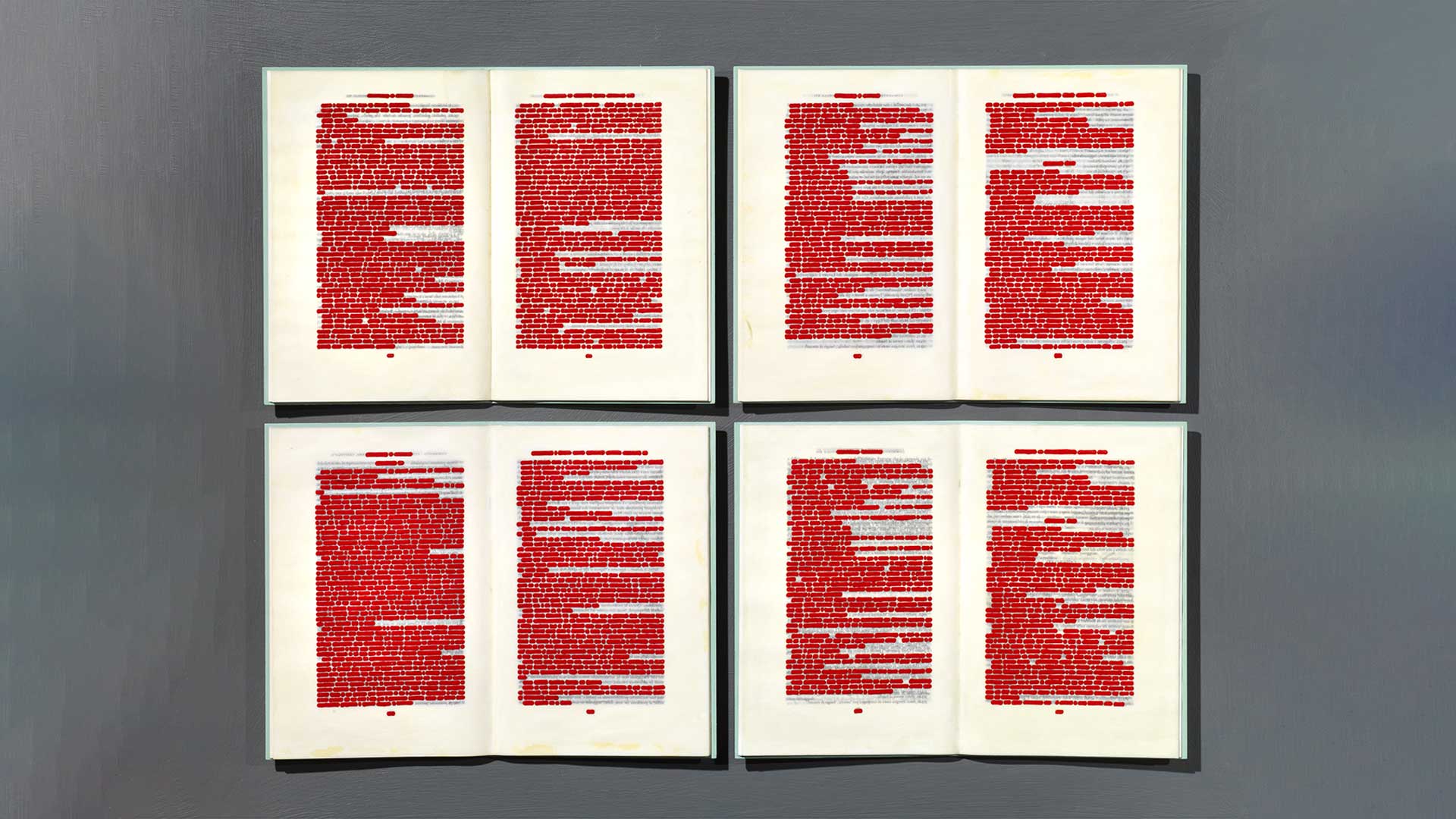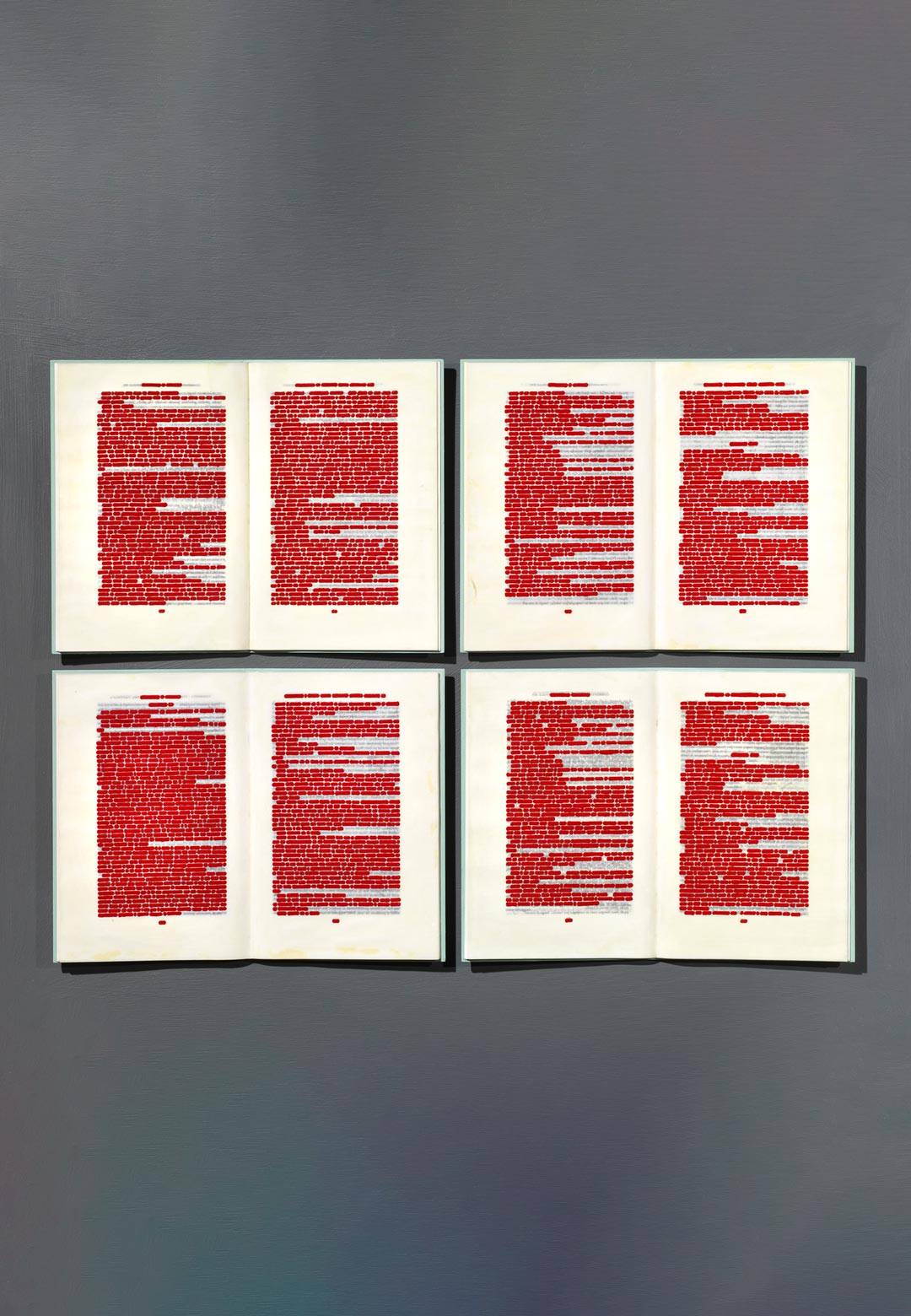The 28th edition of miart - the international modern and contemporary art fair organised by Fiera Milano - returns to Milan (Allianz MiCo) from 12 to 14 April 2024, directed for the fourth year by Nicola Ricciardi. The art fair includes 181 participating galleries, 40 per cent of which are from outside the country and hosting galleries from 28 countries around the world: Brazil, Japan, South Korea, and South Africa, to name a few.
Like previous years, Ricciardi's direction for miart tends to draw directly from aspects of music; the theme for this year's edition, No Time No Space, comes from Italian musician Franco Battiato's 1985 song. Ricciardi tells STIR, "Languages like music can actually help you to reach a bigger public, and then once you've reached that public, you can try to bring them or create an interest in contemporary art, which is something that I've always been obsessed with, how to explain what contemporary art is. To do so through words and lyrics and music, which can range from classical to pop music, has always proved extremely useful in my profession."
In 2021, the fair edition was titled Dismantling the Silence, inspired by 50 years of the first edition collection of poems by Charles Simic, also directly congruent to the quiet of the COVID-19 lockdown. The artistic director elaborates, "There was silence all around, and we needed to rebuild a dialogue, not only with galleries, but also with institutions, the city of Milan, our community, collectors, and directors. So, Dismantling the Silence became the title and a manifesto of what we were doing. And from that moment, I started thinking of the theme and the title of the fair as something important, something that can reflect in one or a few words - the mission we have every year."
In the years to follow, the titles of miart editions became the contemporary microcosm of our collective existence; in 2022, the fair edition was titled Primo Movimento, which was taken from classical music and translated to the "first movement", apt for the new normal which followed as the restrictions of the global lockdown saturated, having inspired the beginning of a new symphony. Ricciardi comments, "In 2021, from Dismantling the Silence, then, we filled that silence with the beginning of something new, Primo Movimento, and then the music was good enough that it allowed us to build a more substantial, more robust affair in 2022". Last year's fair theme wasCrescendo, again, a musical term remarking the upward trajectory and growth of the art fair, now transcending beyond spatial and temporal borders. That leads us to this year's edition, which builds on this legacy with No Time No Space.
Ricciardi's interdisciplinary inspiration stems from the intention of disregarding labels between modern and contemporary art or art and design, for that matter, and his creative leadership steers the conversation on multiple facets of art, like music, dance, performances or theatre. Indeed, in one of their most remarkable actions as a creative leader, Ricciardi believes that "once you start putting labels, you start diminishing the potential of art." For miart, he was successful in rendering all labelling distinctions redundant by grouping design, contemporary, and modern galleries in one Established section.
This is also reflected in the curatorial programmes and projects for miart 2024, which are divided into three sections. Emergent is curated by Attilia Fattori Franchini and is dedicated to 23 galleries from all over the world promoting the new generation of artists. Portal, curated by Julieta Gonzalez and Abaseh Mirvali, is designed to reassess well-known and less-recognised artists' work and artistic practice through the presentation of 10 small exhibitions distributed throughout the main section, featuring 12 selected galleries. Lastly, Timescape within the Established section, is a curated project which will unfold over the subsequent three editions of miart. It aims to focus on artists and work outside of the traditional offering of the fair, starting in 2024 with a series of micro-exhibitions exploring the beginning of the 20th century.
On asking about the programming for miart, Ricciardi expressed the goal to engage the larger public through the timing of the art and design fairs, such as Milano Design Week (April 16-21, 2024), their first ever collaboration with Fuorisalone, an acknowledged highlight of the Milan Design Week. In regards to any potential intellectual exchange between miart and Venice Art Biennale, Ricciardi referred to this year's edition as "an aperitivo before the Biennale”, as many exhibiting galleries have invited artists that will be featured at the biennale. It would allow visitors to appreciate these artists and their practice in a different context at miart before going to see them at the Venice Biennale. Recalling last year's edition Ricciardi mentioned Brasilian curator Adriano Pedrosa visiting miart. This led to a very interesting discussion of how art fairs act as an expanded field of reference for biennales and more academically inclined inquiries.
STIR spoke to Ricciardi about the circularity of time, especially regarding recurring art events, fairs and festivals. Ricciardi demonstrates how, despite the art event's four-day longevity, human commerce occurs before its execution, which must be taken into consideration. This leads to an experimental cycle of trial and error. Ricciardi tells STIR, that coming back to the art fair year after year, from ideation to execution, is like re-reading a book. Perceiving a curatorial role in an institution is also a process of trial and error, but one never recreates an exhibition that has already been opened in a museum or a gallery; the curatorial progression then is to move on to the next project. However, in a commercial curatorial role for recurring events, curation and directorial leadership evolve as a practice.
Ricciardi concludes, “The 2024 edition reaffirms this goal, not only by exploring new thematic and geographic territories but also by emphasising our commitment to research, positioning miart as a platform for observing contemporary society and its changes.”






 Sign in with email
Sign in with email










What do you think?